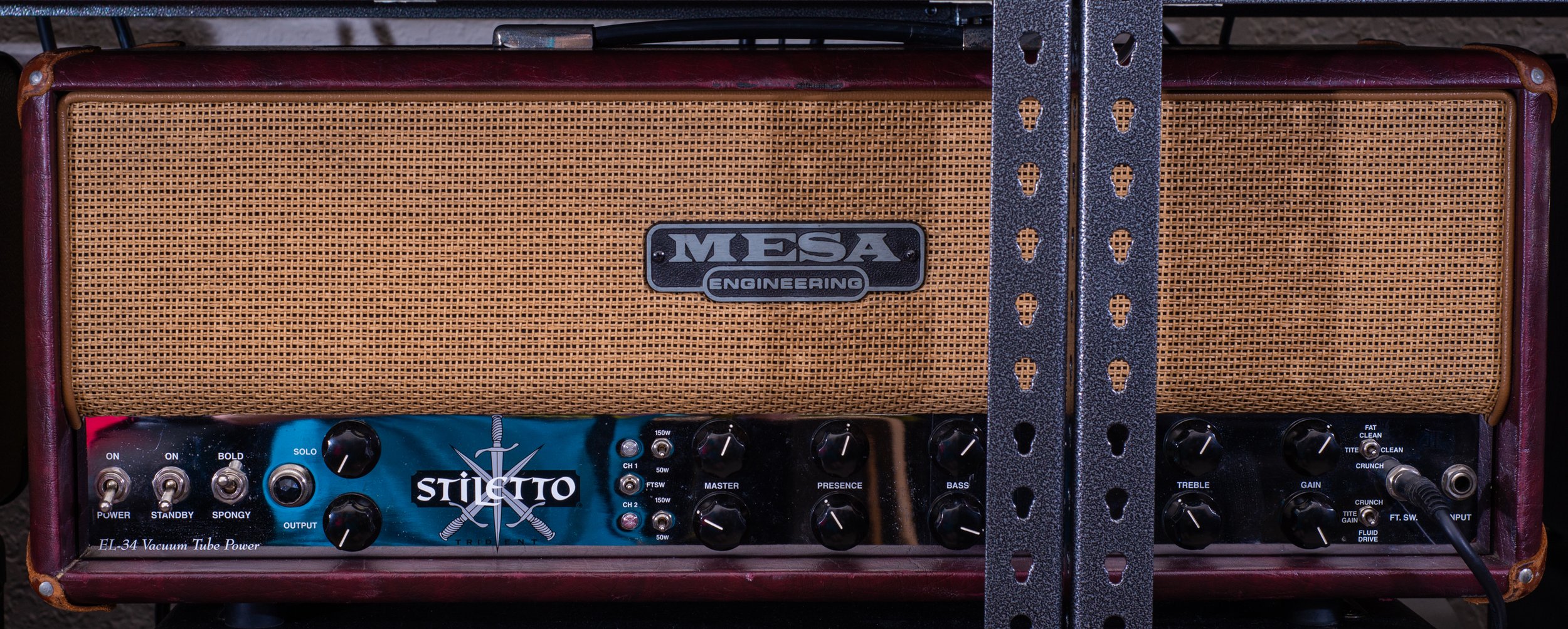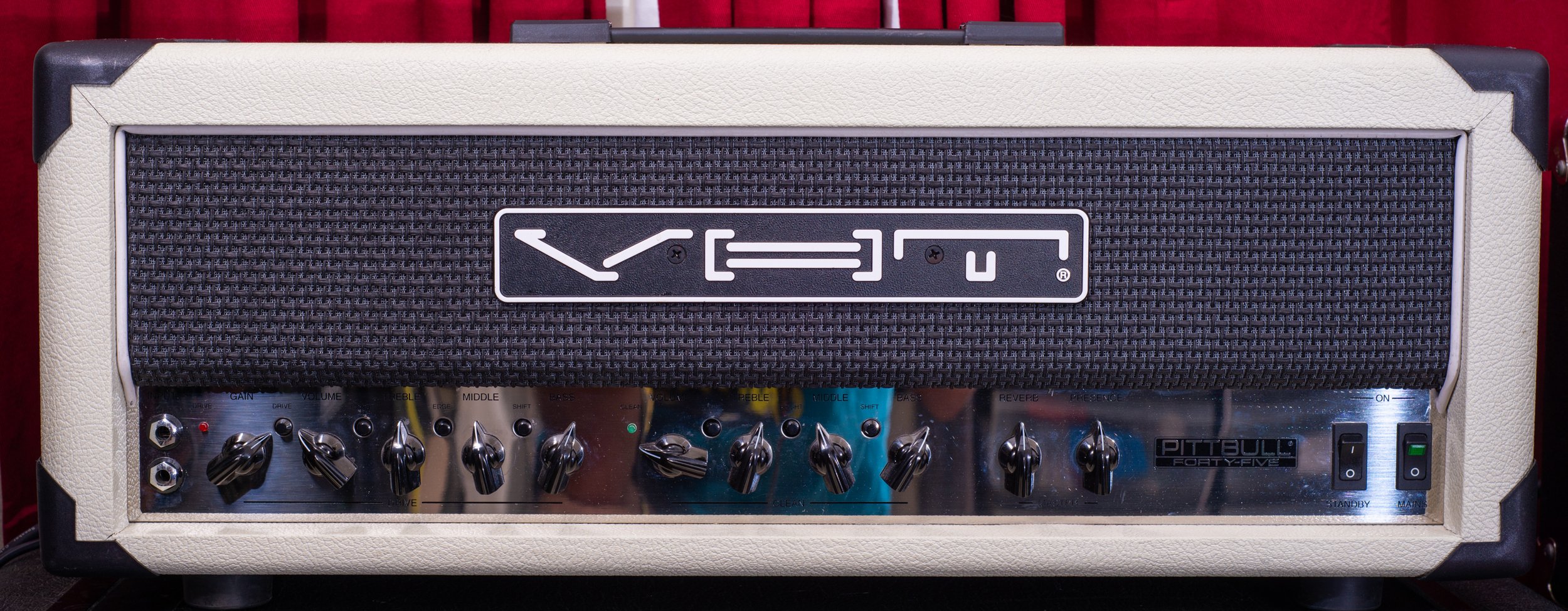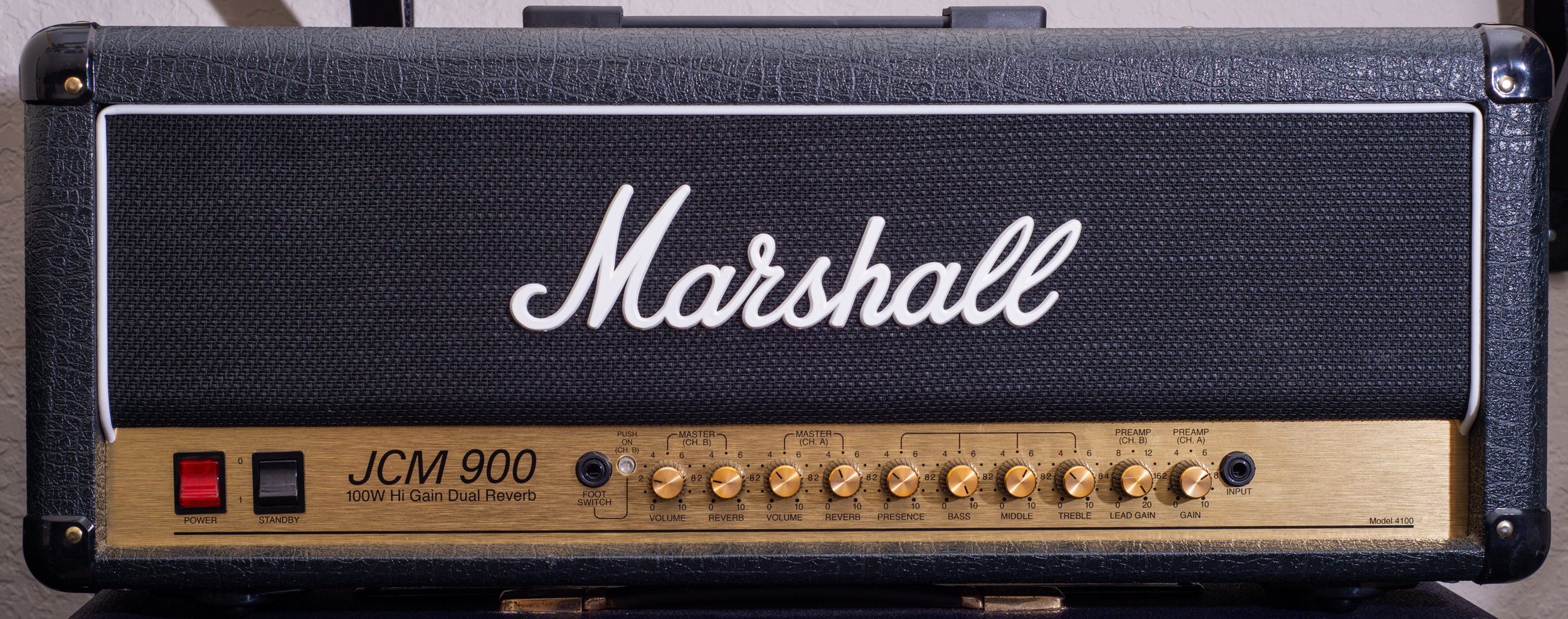I saw this pop up on Guitar Center’s used listings one morning (I’m sure some of you are tired of reading that exact statement, but it’s how I get most of my gear!) and jumped on it. I have wanted a Rhodes Colossus for a long time, probably since I first saw that Keith Morrow video with the different Seymour Duncan pickups compared back to back. The tone was incredible, as well as the riff - like a 6505 with a tighter bottom, I thought.
Anyway, the Orthos 2 isn’t exactly a Colossus, but I can stomach the cost a lot better. I lucked out and ended up with a 100w version, with extremely heavy transformers and a very cool color LED lit front logo and metal grille. This LED changes colors depending on which channel, and which master volume you have selected, and even cooler, you can flip a few small dip switches on the rear panel and change which color each channel is. Want your clean channels to be blue and green, and the drive channels yellow and red? You can do it - or any combination of them. You can also do LED’s completely off, purple, white, etc by choosing a combination of RGB per channel. It’s a really minor feature at the end of it, but it sure is a cool one.
Another really interesting feature, is that technically this is a two channel amp. The first channel is for cleans, and the second for leads/overdrive. Nothing unexpected there, but it also has two master volumes. Also not that unique, but what is special is that each channel has a few switchable options, and which options are currently in the signal path depends on which master you are using. For example, if you are on the Lead channel, using Master 1, you can choose to have crunch mode engaged, bright switch off, and “feel” knob turned to something like “4.” Then, when you hit the switch to go to master 2, you can have the bright switch turn on, and the feel knob set to “6” instead. So even though it’s technically a two channel amp, and each channel has its own EQ section, you can get some different textures, gain amounts, and of course volume level by switching masters.
Speaking of the “feel” knob, this is a 6-way rotary control that has a drastic effect on the distortion tone. I am having trouble finding the rhyme or reason to each setting - it’s not as simple as “feel 1” is less gain than “feel 6.” I find that “4” and “6” seem to have the most saturation, so I really liked those when I first plugged in. Now that I’ve had some more time with it, I’m really liking the feel set on 2, especially with crunch mode engaged on master 1, for a classic rock tone without too much bass, then I leave the feel on 6 for master 2 (crunch mode is automatically off on master 2) and that’s my high gain lead channel. Talk about a great way to set up a “2 channel” amp, in a way that has effectively 4 usable sounds that all have a uniform sort of language when playing.






